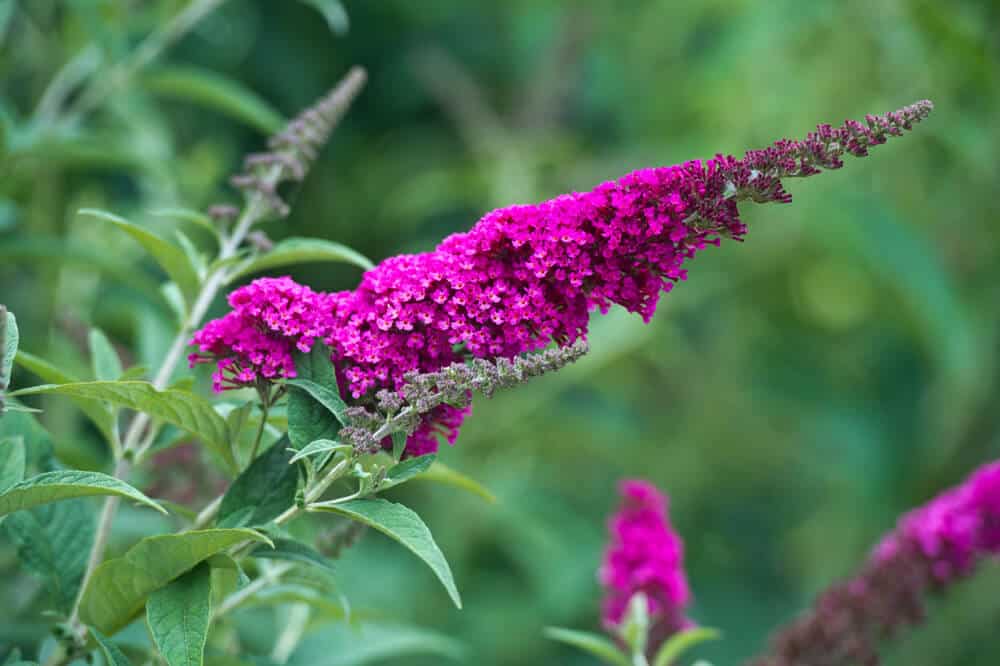What Is The Buddleia Plant and How Do You Remove It?
Buddleia, also known as butterfly bush, is an invasive plant species that can crowd out native plants and disrupt natural ecosystems. If you have Buddleia in your garden, there are a few things you can do to get rid of it or control it as it can quickly spread and take over.
How do you identify Buddleia?
The Buddleia is a fast-growing, deciduous shrub that can reach up to 4 metres in height. It has an open, airy habit and produces an abundance of showy flowers in shades of purple, pink, or white from mid-summer to early fall. Buddleia is a popular choice for butterfly gardens as it attracts many different species of butterflies.
Buddleia can be easily propagated from cuttings taken from new growth in late spring or early summer. Cuttings should be taken at 6-8 inches long and planted immediately in moist soil. Once established, the Buddleia requires little care other than occasional watering during extended periods of drought. However, be extremely cautious as it is known as a nuisance weed and will quickly grow out of control.
It is a tough and adaptable shrub that is tolerant of a wide range of growing conditions, including full sun or partial shade, poor soils, and urban pollution. In fact, the Buddleia is often used as a street tree or foundation planting due to its ability to thrive in difficult growing conditions, making it difficult to stop growing once it has started.
Buddleia is sometimes referred to as an invasive species as it is known to have spread throughout the UK rail network by its wind-borne seeds and the low-pressure drag created by trains. It can set root anywhere but it typically seeks areas such as quarries, urban wastelands, railways, gravel workings, and building sites. It can cause structural damage if there are cracks or unstable areas of concrete and it can set its roots in pavements, chimneys, brickwork, pipework and foundations as it can find the smallest cracks much like Japanese Knotweed. If this happens, its roots have the strength to through and crack structures and materials manmade and natural.
How does it spread?
Buddleia davidii, commonly known as butterfly bush, is a species of flowering plant in the figwort family (Scrophiariaceae), that is native to China. It is widely cultivated as an ornamental plant in temperate regions around the world where winter is hardy. It flowers profusely from late spring to early autumn, with smaller flower panicles continuing into late autumn.
The flowers are rich sources of nectar for many butterflies and other insects. The caterpillars of some moths also feed on the leaves, including those of the day-flying crepuscular Burnished Brass (Udea ferrugalis). In addition, several bees visit Buddleja flowers for pollen, including large carpenter bees; small solitary bees such as Andrena flavipes also collect nectar but not pollen.
Why is Buddleia (Butterfly bushes) known to be bad?
Buddleia, or butterfly bush, is a fast-growing species that can overtake and crowd out native plants if not controlled effectively. Buddleia has deep roots and produces a lot of seeds, which allows it to spread and take over an area easily.
Removed from its natural environment, the butterfly bush can become an aggressive invader. When planted in gardens or along roadsides, it can crowd out native vegetation and change the local ecosystem. The Butterfly bush can also hybridise with other Buddleja species, further exacerbating the problem so it has to be controlled.
Buddleia should either be removed if you identify it or if not you should ensure you contain the plant by regularly pruning it back and removing any seedlings that pop up nearby. We would advise that you always seek advice from a professional weed control business like South Wales Knotweed as they have the experience and knowledge to advise you on the best course of action.
Why remove it?
Buddleia is known as a problem in the UK as it outgrows and takes over native plants for its own resources, alters local ecosystems, and provides little food or shelter for native wildlife.
Efforts to control the buddleia populations have been ongoing for many years across the world, however, they have been mainly unsuccessful unless a professional nuisance weed business is involved. The plant is extremely difficult to eradicate once it becomes established in an area, and it will continue to spread despite our best efforts. Some environmentalists have even called for the complete eradication of buddleia from North America.
How to remove Buddleia
If you have this plant on your property and want to remove it, there are a few things you can do:
-
- One method is to physically remove the plant by digging it up from the roots. This can be a tedious and difficult process as any tiny fragments that are allowed to escape will mean the weed will regrow again. This method is effective if you use a specialist weed control business who knows exactly what they are doing and are experts in removing highly spreadable plants and weeds. You have to make sure that all of the root systems are removed so that the plant does not regrow
- Another option is to use herbicides. There are many different products on the market that can be used to eradicate buddleia plants. Be sure to read and follow all instructions carefully when using these products. Be aware that it is illegal for you to use many herbicides now unless you have the required certification and insurance to do so. If not done properly you can cause injury to yourself and others, damage the plants and waterways around you as well as not fully eradicate the buddleia itself
The best advice we can give you is to contact Green Leaf Remediation and we can advise you on the best and safest control and eradication methods.

Why choose Green Leaf Remediation?
We are a fully qualified Japanese Knotweed Certificated Surveyor (JKCS) and we specialise in identifying the presence of and controlling Knotweed, other invasive plants and ‘general nuisance weeds’ found in the UK for residential and property development sites. Our professional service uses herbicide treatments that are appropriate for your property and the vegetation growing around it.
Our Qualifications & Accreditations Include:
-
- City & Guilds NPTC Level 2
- Principles of Safe Handling & Application of Pesticides (PA1/PA6)
- Principles of Safe Handling & Application of Pesticides near water (PA6AW)
- Herbicide Stem Injection
- Property Care Association Members
- The Control & Eradication of Japanese Knotweed Surveyor’s Training Course
- Qualified Technician (PCAQT) in Japanese Knotweed
- Accredited Surveyor in Japanese Knotweed
Whether or not to try to eradicate buddleia is a complex decision that depends on many factors. On one hand, this plant is a major problem due to its invasiveness and negative impacts on native ecosystems. On the other hand, eradicating buddleia can be difficult if you are attempting it yourself, and it could have unintended consequences for other species of plants and wildlife.
Contact us today on 01269 591651 or 07531 142316 and one of our experts will be able to answer any questions you may have and we can book your free and no-obligation survey.

Martyn works for Green Leaf Remediation as a marketing specialist. He takes great pride in creating quality content regarding Japanese knotweed.
